- Home
- Alison Weir
Life of Elizabeth I Page 2
Life of Elizabeth I Read online
Page 2
During the first half of the sixteenth century it had become fashionable for gently-born girls to be educated in the same way as their brothers - Elizabeth herself had benefited enormously from this - but after the publication of Balthasar Castiglione's The Courtier in 1561, the trend was towards proficiency in social skills rather than academic ones. Well-reared young ladies were expected to be able to read, write letters, paint, draw, make music, do fine needlework and dance - accomplishments all designed to enhance their chances in the marriage market. Nevertheless, those ladies in attendance on the Queen, who was a formidable intellectual, were expected to be well-read and erudite, for the court was a centre of high culture.
Most arts of the Elizabethan period reflected the domestic tastes of the upper and middle classes. Portraiture flourished, but the vogue was for detailed costume pieces rather than the realistic portrayals by Holbein and Eworth that had inspired an earlier generation. It had been Holbein who introduced miniature painting into England, but it was left to the genius of Nicholas Hilliard to make it popular and start an English tradition that continues to this day.
Architecture flourished: this was an age of aristocratic building, with great houses being either restored or built anew in the English Renaissance style. This was characterised by classical design, sculptured ornaments and friezes, tall chimneys, large mullioned windows, balustrades on the parapets, decorated columns and Italianate facades. Gone were the fortified manor houses and castles of the Middle Ages; if crenellations, gatehouses and moats were included in the Renaissance designs, their purpose was purely decorative.
Inside each mansion was to be found the by now obligatory long gallery with its tapestries and family portraits, and other rooms sumptuously adorned with marble, wall murals, linenfold panelling, decorative plastered ceilings and glass stained and leaded with colourful coats of arms set in large oriel or bay windows. Heraldic or symbolic motifs were incorporated into the decor everywhere. In the rooms might be found furniture of English oak, upholstered with leather or velvet, looking-glasses of silver, great tester beds with embroidered hangings, and often a set of virginals, reflecting the current craze for instrumental chamber music, a fashion set by the Queen herself. Music was one of the great domestic arts of the period, with the ballads and madrigals of Thomas Morley, John Wilbye, Thomas Weelkes and John Dowland rivalling the inspiring devotional anthems and motets written at court by Thomas Tallis and William Byrd.
The gardens that surrounded the stately houses, and also those outside more humble homes, attracted admiring comments from foreign visitors. It is now rare to find an Elizabethan garden in its original state, but what is clear from contemporary records is that vineyards, orchards and flower beds containing rare and unusual plants were considered more important aesthetically than kitchen or herb gardens, although the latter had their practical uses when it came to flavouring food or distilling medicines. The fashionable garden would provide an elegant setting for the house, and would be of formal design, surrounded by stone walls or thick hedges of holly or hornbeam, all set at rigid right angles to each other. Shaded arbours and classically inspired urns or statues completed the scene.
The Elizabethans made costume their own peculiar art form. Never before had fashions been so fantastic. Men wore tight-fitting doublets with high collars and padded shoulders over lawn or cambric shirts with frills that were exposed at the neck. Starched ruffs later replaced this detail. Men's balloon-shaped breeches, which were often stuffed with horsehair and might reach to the knees, sometimes achieved ludicrous proportions and made their hose-clad legs look ridiculously stick-like. Only men with well-turned calves could carry off this fashion well. Cloaks were short and attached to the doublet at the shoulders, whilst hats sported plumes and were set at a jaunty angle. Apart from his sword or dagger, the Elizabethan gentleman of fashion adorned his costume with as much embroidery, braiding and jewellery as there was space for.
Women's dress changed subtly during the period, but still managed to exaggerate the contours of the female shape. The square necklines of earlier decades continued to predominate, but for many years they were worn over embroidered chemises. It was only towards the end of the century that the bosom was again exposed. Like men, women wore ruffs - small frills at first, which later developed into the large pleated cartwheel ruffs of the 1580s and the open-front design of the 1590s, the latter often being worn against a stiffened collar of gauze. Skirts grew ever wider and fuller, supported by the Spanish farthingale, a petticoat stiffened with whalebone or thin steel rods. Above was worn a stiff bodice that tapered to a point over the stomach. One wit remarked that ladies of the court looked like trussed chickens set upon bells.
Sleeves - separate attachments for a gown - were full, and were often richly embroidered or slashed to show puffs of the fine lawn undershirt beneath. Materials were usually silk or velvet, whatever the season, and jewels were worn in abundance - hair ornaments, necklaces, ropes of pearls, bracelets, rings, brooches, pins, pomanders, girdles and even jewelled books to hang at the waist. Many women used cosmetics, often ruining their complexions with concoctions containing lead or arsenic.
Frequently the cosmetics were used to hide the ravages of smallpox, then a common and much-feared disease.
For all their insularity, the Elizabethans did look beyond their island to the new worlds being discovered overseas. The sixteenth century was England's age of exploration and adventure, of speculation in overseas expeditions, of Sir Walter Raleigh, who founded the first English colony in Virginia, named after the Queen, and of Sir Francis Drake, who circumnavigated the world.
At home, as trade flourished, so industry expanded. Protestant refugees from the Continent introduced lace-making, silk weaving, engraving, needle- and thread-making and other skills into England, whilst the woollen cloth industry continued to thrive and bring prosperity to an ever-widening area. The Statute of Apprentices of 1563, by making long indentures mandatory, helped to bring stability to industry and farming.
Yet commercial success had its debit side. The pursuit of wealth and the frantic race to acquire land and power meant that most people cared only for their own interests and not for the public good or the needs of those weaker than themselves. It was a greedy, avaricious age, corrupt in many ways. The court was seen as a magnet for grasping scavengers, and there were many who managed to suborn the laws by bribery.
The rich lived well. The writer Philip Stubbs observed: 'Nowadays, if the table be not covered from the one end to the other with delicate meats of sundry sorts, and to every dish a sauce appropriate to its kind, it is thought unworthy of the name of a dinner.' People were prepared to spend liberally on expensive imported spices, which were often used to disguise the taste of meat that had gone off during winter storage, for most animals were slaughtered in the autumn and their meat salted down and barrelled for use until the spring. Small beer or ale was drunk in preference to water by all ages and classes, and fine wines were imported from the Continent. Drunkenness was common, so it became commonplace to serve drinks from a sideboard rather than at table, in the hope that people would not drink as much.
Although Sir Walter Raleigh is widely credited with introducing tobacco into England from America, it was probably John Hawkins who first imported the weed in 1566. By the 1590s, pipe-smoking was a common, if costly, habit - tobacco cost three shillings an ounce. Everybody, it seemed, was using it - princes, courtiers, noble ladies, soldiers and sailors.
Such was the England of Elizabeth Tudor. When she came to the throne her subjects knew relatively little about her. Nurtured in a hard school, having suffered adversity and uncertainty from her infancy, and having gone in danger of her life on at least two occasions, she had learned to keep her own counsel, hide her feelings and live by her wits. Already, she was a mistress of the arts of deception, dissimulation, prevarication and circumvention, all admired attributes of a true Renaissance ruler. At twenty-five years old, she was at last in control of her dest
iny, and having lived in one kind of constraint or another for the whole of her existence so far, she was determined to preserve her independence and autonomy. She had learned from her sister's mistakes, and resolved never to repeat them. She would identify herself with her people and work for their common interests. She would bring peace and stability to her troubled kingdom. She would nurture it, as a loving mother nurtures a child. For this, she believed, God had preserved her life.
Chapter 1
'The Most English Woman in England'
The first act of Queen Elizabeth had been to give thanks to God for her peaceful accession to the throne and, as she later told the Spanish ambassador, to ask Him 'that He would give her grace to govern with clemency and without bloodshed'. With the calamitous example of her sister before her, she had already decided that there should be no foreign interference in the government of England, not from Spain or Rome or anywhere else, and was resolved to be herself a focus for English nationalism - 'the most English woman in England'.
Elizabeth could certainly boast of her English parentage. Her father, Henry VIII, had been of royal Plantagenet stock, with some Welsh blood from his father Henry VII, while Elizabeth's mother, Anne Boleyn, had been an English commoner whose ancestors had been Norfolk farmers and merchants who had risen to prominence through their wealth and a series of advantageous marriages with daughters of the nobility. Through Anne's mother, Elizabeth Howard, Elizabeth was related to the Howards, earls of Surrey and dukes of Norfolk, England's premier peers, and through the Boleyns themselves to many other notable English families such as the Careys and the Sackvilles.
When Henry VIII fell in love with Anne Boleyn in approximately 1526, he had been married for seventeen years to a Spanish princess, Katherine of Aragon, whose maid of honour Anne was. Katherine had failed to provide Henry with the male heir he so desperately needed, and for some years he had entertained doubts about the validity of the marriage, on the grounds that the Bible forbade a man to marry his brother's widow: Katherine had briefly been married to his elder brother Arthur, who died aged fifteen, but she stoutly maintained that the marriage had never been consummated.
Henry had had affairs before, but his passion for Anne Boleyn was all- consuming, and burned ever more fiercely after she made it clear that she would not be his mistress. Her virginity, she declared provocatively, would be the greatest gift she would bring her husband.
By early 1527, Henry VIII had decided to apply to the Pope for an annulment of his marriage. At around the same time, he resolved to have Anne Boleyn for his wife, as soon as he was free. But the Pope, scared of Katherine's powerful nephew, the Holy Roman Emperor Charles V, refused to co-operate. The King's 'Great Matter' dragged on for six years, by the end of which time the English Church had been severed from the Church of Rome, and Henry VIII had declared himself its Supreme Head. Thus liberated, he was able to have his marriage to Katherine declared null and void, and marry Anne, which he did as soon as she became pregnant in 1533. The new Queen was vastly unpopular among his subjects.
Henry and Anne had confidently anticipated that their child would be a son, and were disappointed when it turned out to be a girl. Named after both her grandmothers, Elizabeth of York and Elizabeth Howard, the Princess Elizabeth was nevertheless a healthy baby, and her parents were hopeful of providing her with a brother shortly.
This was not to be. Two, possibly three unsuccessful pregnancies followed, during which time Henry fell out of love with Anne and began paying court to one of her ladies, Jane Seymour. He had realised also that Anne was entirely unsuitable as queen, since she was over- flirtatious, immoderate in her public behaviour, and vengeful towards her enemies. She was, in the brief time allowed her, a good mother, incurring her husband's displeasure by insisting on breastfeeding Elizabeth herself, which high-born mothers never did, and choosing pretty clothes for the child. She rarely saw her, however, for the Princess was given her own household at Hatfield House at three months old, and thereafter her mother could only visit when her other duties permitted.
The loss of a stillborn son in January 1536, on the day of Katherine of Aragon's funeral, sealed Anne's fate. Arrested with five men, one her brother, she was charged with plotting to murder the King and twenty- two counts of adultery - eleven of which have since been proved false, which suggests that the rest, for which there is no corroborative evidence, are equally unlikely. Anne was taken to the Tower, tried and condemned to death. After her marriage had been annulled and her daughter declared a bastard, she was beheaded on 19 May 1536.
Elizabeth was not yet three when her mother was executed, and no one knows when or how or what she found out about that tragic event. She was a precocious child, and soon noticed the change in her life, asking her governor why she had been addressed as my Lady Princess one day and merely as my Lady Elizabeth the next. The loss of her father's favour can only have led to more awkward questions, so it is reasonable to suppose that she found out what had happened to her mother sooner rather than later. The effect on her emotional development can only be guessed at, but it must have been profound.
Nor do we know whether or not she believed in her mother's guilt. She made only two references in adult life to Anne Boleyn, neither of them particularly revealing, although she was close to, and promoted the interests of, several relatives on her mother's side. What is clear is that throughout her life she revered the memory of her sometimes terrifying father, who had had her declared baseborn and could not bear to have much contact with her in the years following Anne Boleyn's disgrace. Those years brought a succession of stepmothers, all of whom took pity on the motherless child and did their best to restore her to favour.
Perhaps the worst episode in her childhood occurred when Elizabeth was eight. The King's fifth wife, Katherine Howard, a cousin of Anne Boleyn, was a giddy young girl who unwisely admitted former lovers into her household and - it was later alleged - into her bed. Late in 1541 her crimes were discovered. The King wept when told, but would not see her. In February 1542, she met the same fate as Anne Boleyn.
It was around this time that Elizabeth told her friend, young Robert Dudley, son of the Earl of Warwick, 'I will never marry.' Some writers have suggested that the events of her childhood led her to equate marriage with death, and although there is no evidence to support this theory, there can be little doubt that this was a traumatic time for Elizabeth, with Katherine Howard's execution reviving painful thoughts of what had happened to her mother.
It was not until Henry married Katherine Parr in 1543 that Elizabeth came to enjoy a semblance of family life, as the Tudors understood it, and even then she incurred her father's displeasure for an unknown offence and was banned from seeing him for a year. They were reconciled before his death in January 1547, when his nine-year-old son Edward VI succeeded to the throne and Elizabeth went to live under the guardianship of Katherine Parr at the latter's dower palace at Chelsea.
Henry VIII may have neglected his younger daughter in many ways, but he did ensure that from the age of six she should be educated as befitted a Renaissance prince. Katherine Parr made it her business to supervise the education of her stepchildren and engaged the best tutors for Elizabeth, among them William Grindal and the celebrated Cambridge scholar, Roger Ascham. Ascham and his circle were not only humanists, dedicated to the study of the ancient Greek and Latin classics and to the education of women, but also converts to the reformed faith, or Protestants, as such people were now known, and it is almost certain that Elizabeth was fired by their ideals at an impressionable age.
She had a formidable intelligence, an acute mind and a remarkably good memory. Ascham declared he had never known a woman with a quicker apprehension or a more retentive memory. Her mind, he enthused, was seemingly free from all female weakness, and she was 'endued with a masculine power of application'; he delighted in the fact that she could discourse intelligently on any intellectual subject. There were many learned ladies in England, but Ascham was not exaggerating
when he claimed that 'the brightest star is my illustrious Lady Elizabeth'.
Like most educated gentlewomen of her day, Elizabeth was encouraged to become the equal of men in learning and to outdo 'the vaunted paragons of Greece and Rome'. The curriculum devised for her was punishing by today's standards, but she thrived on intellectual exercises and had a particular gift for languages, which she enjoyed showing off. As queen, she read and conversed fluently in Latin, French, Greek, Spanish, Italian and Welsh. She had read the New Testament in Greek, the orations of Isocrates and the tragedies of Sophocles, amongst other works. Her interest in philosophy and history was enduring, and throughout her life she would try to set aside three hours each day to read historical books.
Elizabeth was also skilled at many of the traditional feminine pursuits of the English gentlewoman. In youth, she was adept at needlework and is known to have embroidered bookbindings. Ascham testifies to the beauty of her work and the hours she spent engaged upon it. Her talent as a calligrapher is evident in the many surviving examples of her 'sweet Roman italic] hand' that survive. 'Nothing can be more elegant than her handwriting,' commented Ascham. She had inherited her parents' passion for music, and could play the lute and virginals with virtuosity, as well as sing and write music. She was an excellent horsewoman and one of her favourite forms of exercise was to go hunting. At other times she enjoyed walking outdoors, or shooting with a crossbow. Above all, she passionately loved dancing, although prior to her accession she had had little opportunity to indulge in this pastime.

 Richard III and the Princes in the Tower
Richard III and the Princes in the Tower Britain's Royal Families: The Complete Genealogy
Britain's Royal Families: The Complete Genealogy The Lady in the Tower: The Fall of Anne Boleyn
The Lady in the Tower: The Fall of Anne Boleyn Six Wives of Henry VIII
Six Wives of Henry VIII Elizabeth of York: A Tudor Queen and Her World
Elizabeth of York: A Tudor Queen and Her World Captive Queen
Captive Queen Innocent Traitor
Innocent Traitor The Marriage Game
The Marriage Game A Dangerous Inheritance
A Dangerous Inheritance Katherine of Aragón: The True Queen
Katherine of Aragón: The True Queen The Marriage Game: A Novel of Queen Elizabeth I
The Marriage Game: A Novel of Queen Elizabeth I Princes in the Tower
Princes in the Tower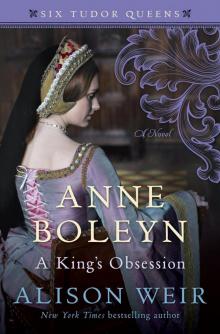 Anne Boleyn: A King's Obsession
Anne Boleyn: A King's Obsession Traitors of the Tower
Traitors of the Tower Mistress of the Monarchy: The Life of Katherine Swynford, Duchess of Lancaster
Mistress of the Monarchy: The Life of Katherine Swynford, Duchess of Lancaster Queens of the Conquest: England’s Medieval Queens
Queens of the Conquest: England’s Medieval Queens Eleanor of Aquitaine: A Life
Eleanor of Aquitaine: A Life Mary, Queen of Scots, and the Murder of Lord Darnley
Mary, Queen of Scots, and the Murder of Lord Darnley Henry VIII: The King and His Court
Henry VIII: The King and His Court Queen Isabella: Treachery, Adultery, and Murder in Medieval England
Queen Isabella: Treachery, Adultery, and Murder in Medieval England Katheryn Howard, the Scandalous Queen
Katheryn Howard, the Scandalous Queen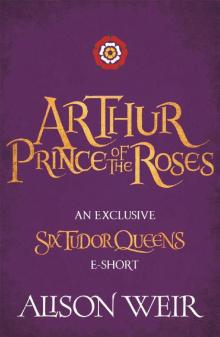 Arthur- Prince of the Roses
Arthur- Prince of the Roses The Wars of the Roses
The Wars of the Roses Eleanor of Aquitaine: By the Wrath of God, Queen of England
Eleanor of Aquitaine: By the Wrath of God, Queen of England Mary Boleyn: The Great and Infamous Whore
Mary Boleyn: The Great and Infamous Whore Jane Seymour: The Haunted Queen
Jane Seymour: The Haunted Queen Anna of Kleve, the Princess in the Portrait
Anna of Kleve, the Princess in the Portrait Lancaster and York: The Wars of the Roses
Lancaster and York: The Wars of the Roses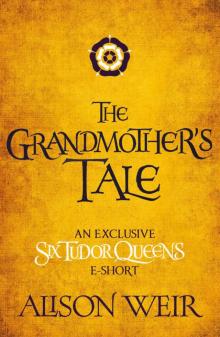 The Grandmother's Tale
The Grandmother's Tale The Princess of Scotland (Six Tudor Queens #5.5)
The Princess of Scotland (Six Tudor Queens #5.5) The Lady Elizabeth
The Lady Elizabeth Katherine Swynford: The Story of John of Gaunt and His Scandalous Duchess
Katherine Swynford: The Story of John of Gaunt and His Scandalous Duchess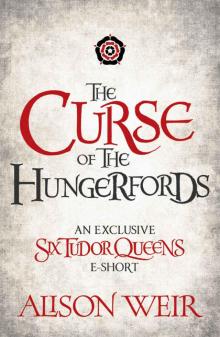 The Curse of the Hungerfords
The Curse of the Hungerfords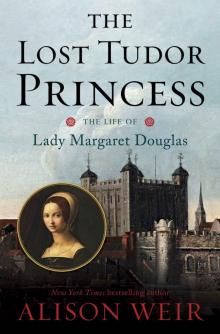 The Lost Tudor Princess: The Life of Lady Margaret Douglas
The Lost Tudor Princess: The Life of Lady Margaret Douglas Eleanor of Aquitaine
Eleanor of Aquitaine Mistress of the Monarchy
Mistress of the Monarchy The Lost Tudor Princess
The Lost Tudor Princess Henry VIII
Henry VIII Anne Boleyn, a King's Obsession
Anne Boleyn, a King's Obsession A Dangerous Inheritance: A Novel of Tudor Rivals and the Secret of the Tower
A Dangerous Inheritance: A Novel of Tudor Rivals and the Secret of the Tower Elizabeth of York
Elizabeth of York Katherine of Aragon, the True Queen
Katherine of Aragon, the True Queen Katherine Swynford
Katherine Swynford Wars of the Roses
Wars of the Roses Queens of the Conquest
Queens of the Conquest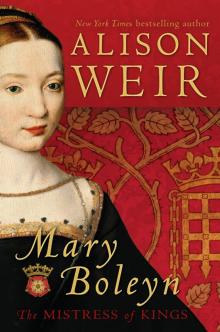 Mary Boleyn
Mary Boleyn Britain's Royal Families
Britain's Royal Families The Tower Is Full of Ghosts Today
The Tower Is Full of Ghosts Today Life of Elizabeth I
Life of Elizabeth I Anne Boleyn A King's Obssession
Anne Boleyn A King's Obssession Lancaster and York
Lancaster and York Jane Seymour, the Haunted Queen
Jane Seymour, the Haunted Queen Queen Isabella
Queen Isabella The princes in the tower
The princes in the tower